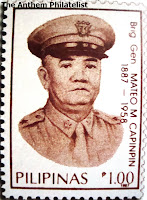"Le Chant du Départ" (Song of Departure)

Upon becoming the head of the French government in 1799, Napoleon abolished "La Marseillaise" as the national anthem (possibly because it was a relic of the revolution, possibly because Napoleon did not like the author Rouget de Lisle), and another song, which was also popular during the revolution, "Le Chant du Départ" (Song of Departure) came to be used as the national anthem of the time.
Originally titled "Hymn de la Liberté" (Hymn of Freedom), but given its new title by Robspierre, is an epic tableau consisting of seven verses, each one sung by a different character: a wife, a mother, children, warriors, old men, etc. The words were written by Marie-Joseph Chénier and the music composed by Étienne Méhul, the most important opera composer in France during the Revolution. He was also the first composer to be called a "Romantic". The anthem was in use from 1799 to1815.
Despite it no longer being the official anthem of France, the song is still popular with the military fo France today. Valéry Giscard d'Estaing used it as his campaign song when he was campaigning for French President in 1974, and, as president, would often have troops play the song.
Next: French anthem in use (1815-1830)
Next: French anthem in use (1815-1830)
The first day cover above features Étienne Méhul, anthem composer, issued on May 25, 1963.






